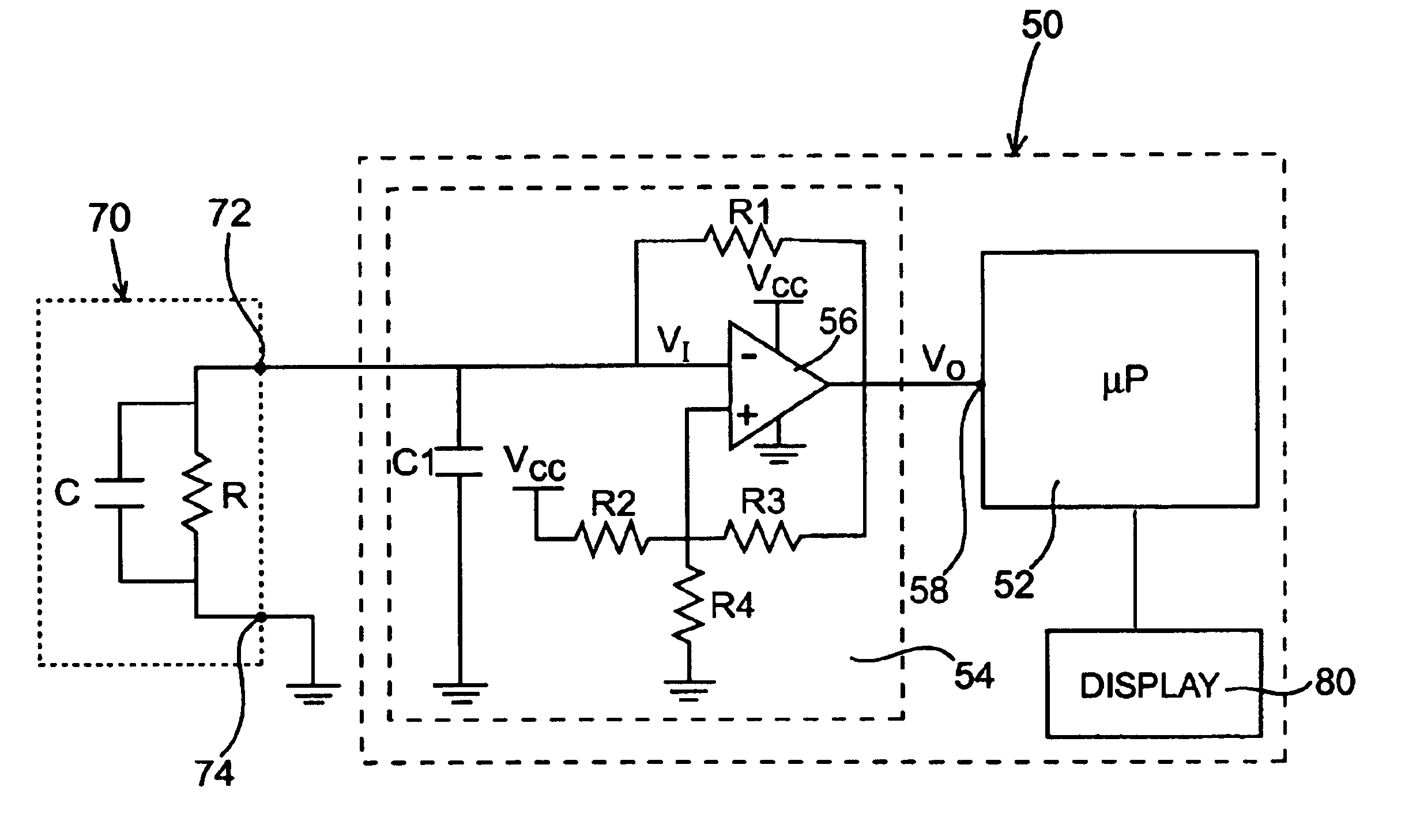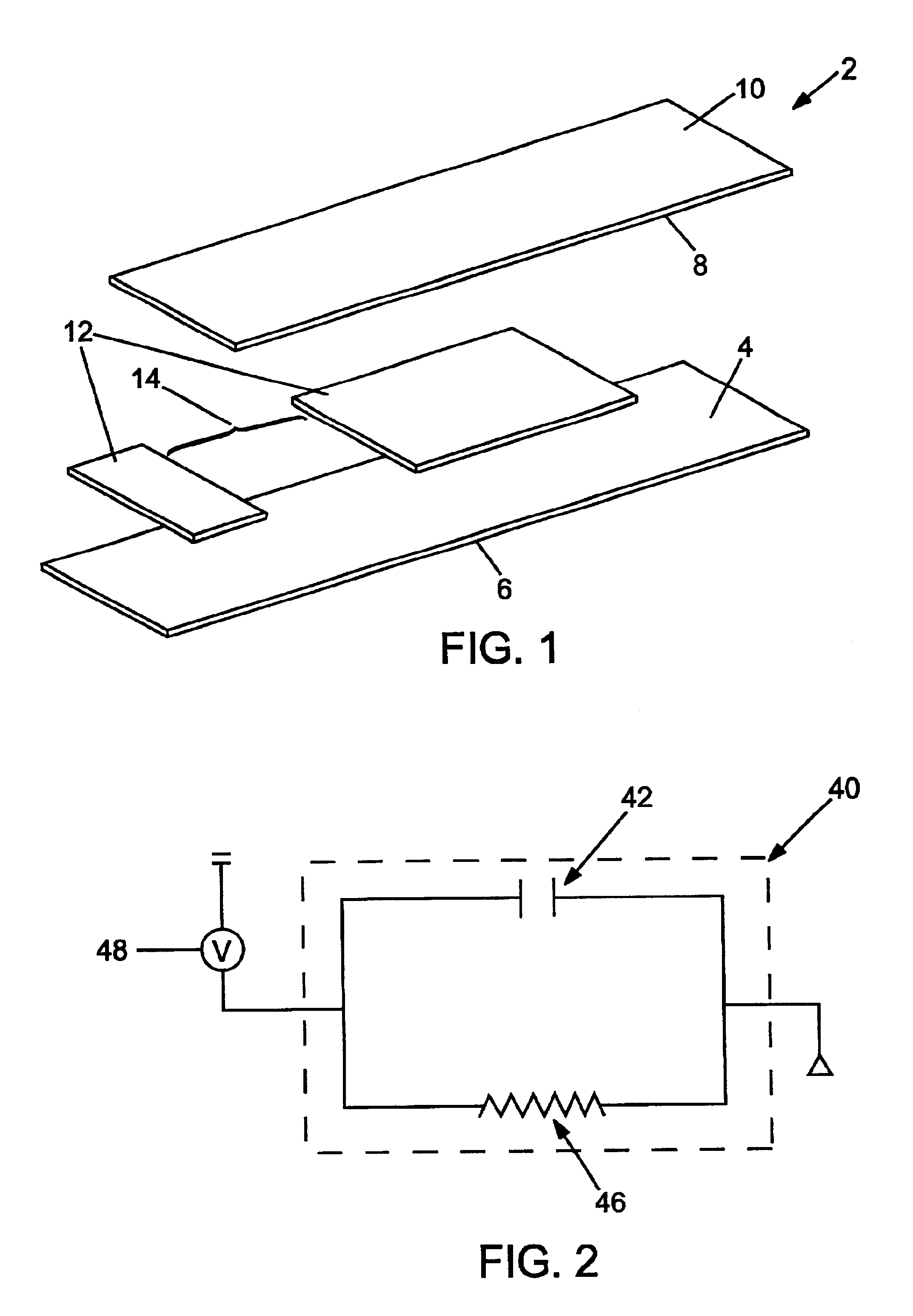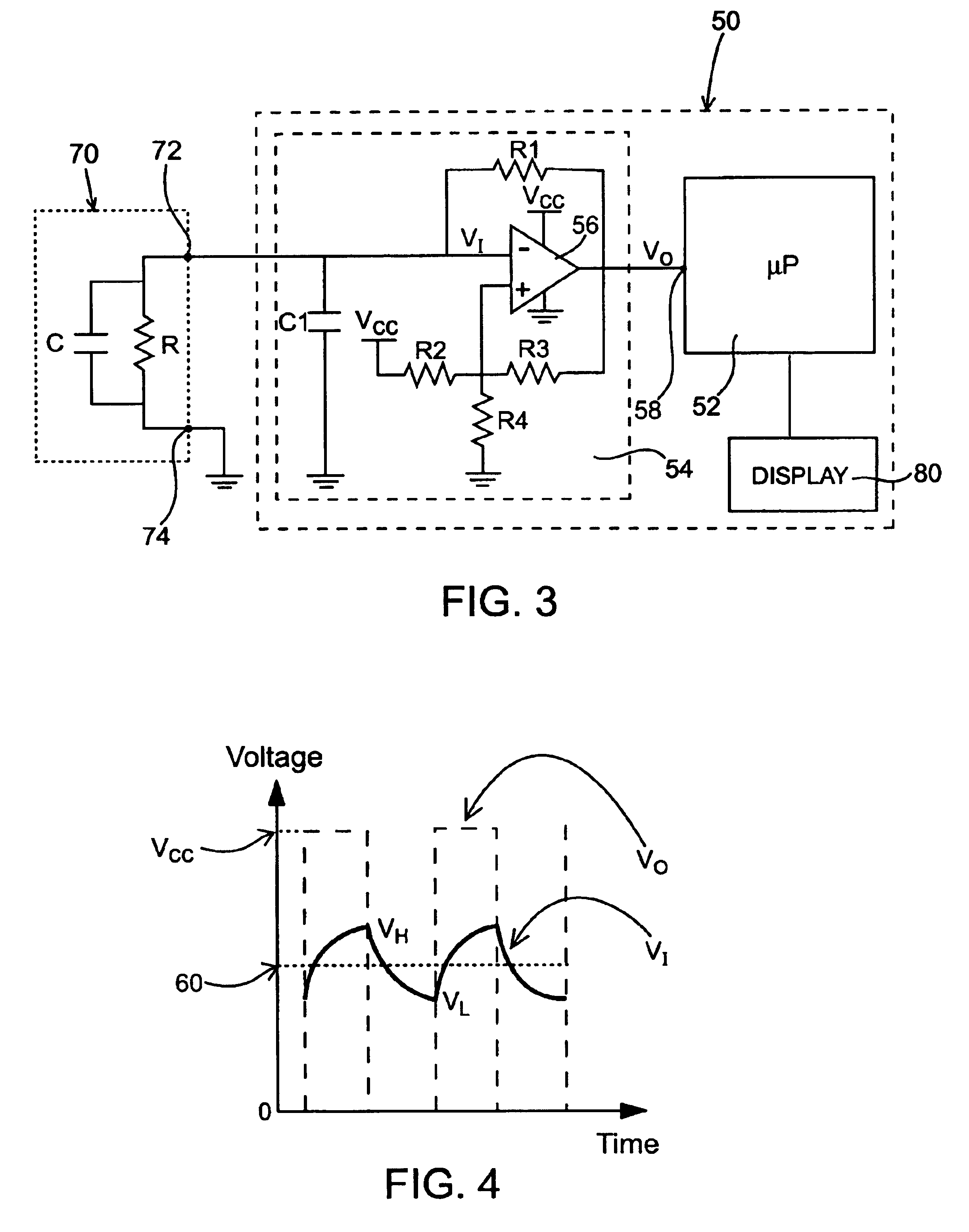Determination of sample volume adequacy in biosensor devices
a biosensor and sample volume technology, applied in the field of electrochemical determination of analyte in biological fluids, can solve the problems of insufficient amount of sample volume to be provided, serious and even life-threatening consequences, and misdiagnosis or improper treatmen
- Summary
- Abstract
- Description
- Claims
- Application Information
AI Technical Summary
Benefits of technology
Problems solved by technology
Method used
Image
Examples
experimental examples
The following results have been observed in connection with the present invention. FIG. 6 shows a comparison between the oscillation periods (y axis) over time (x axis) produced by a test strip having an adequate blood sample volume 130 and by a test strip having less than an adequate blood sample volume 132. The results of the experiment show there is a significant increase in the oscillation period when the test strip is completely filled with the sample solution. These empirical results are offered by way of illustration and not by way of limitation.
Kits
Also provided by the subject invention are kits for use in practicing the subject methods. The kits of the subject invention include a subject system including the electronic circuitry, as described above, or in the form of a meter or other automated instrument, as described above, for determining whether the volume of sample applied to a test strip is adequate enough to provide an accurate analyte concentration measurement to be ...
PUM
| Property | Measurement | Unit |
|---|---|---|
| Electric potential / voltage | aaaaa | aaaaa |
| Concentration | aaaaa | aaaaa |
| Volume | aaaaa | aaaaa |
Abstract
Description
Claims
Application Information
 Login to View More
Login to View More - R&D
- Intellectual Property
- Life Sciences
- Materials
- Tech Scout
- Unparalleled Data Quality
- Higher Quality Content
- 60% Fewer Hallucinations
Browse by: Latest US Patents, China's latest patents, Technical Efficacy Thesaurus, Application Domain, Technology Topic, Popular Technical Reports.
© 2025 PatSnap. All rights reserved.Legal|Privacy policy|Modern Slavery Act Transparency Statement|Sitemap|About US| Contact US: help@patsnap.com



